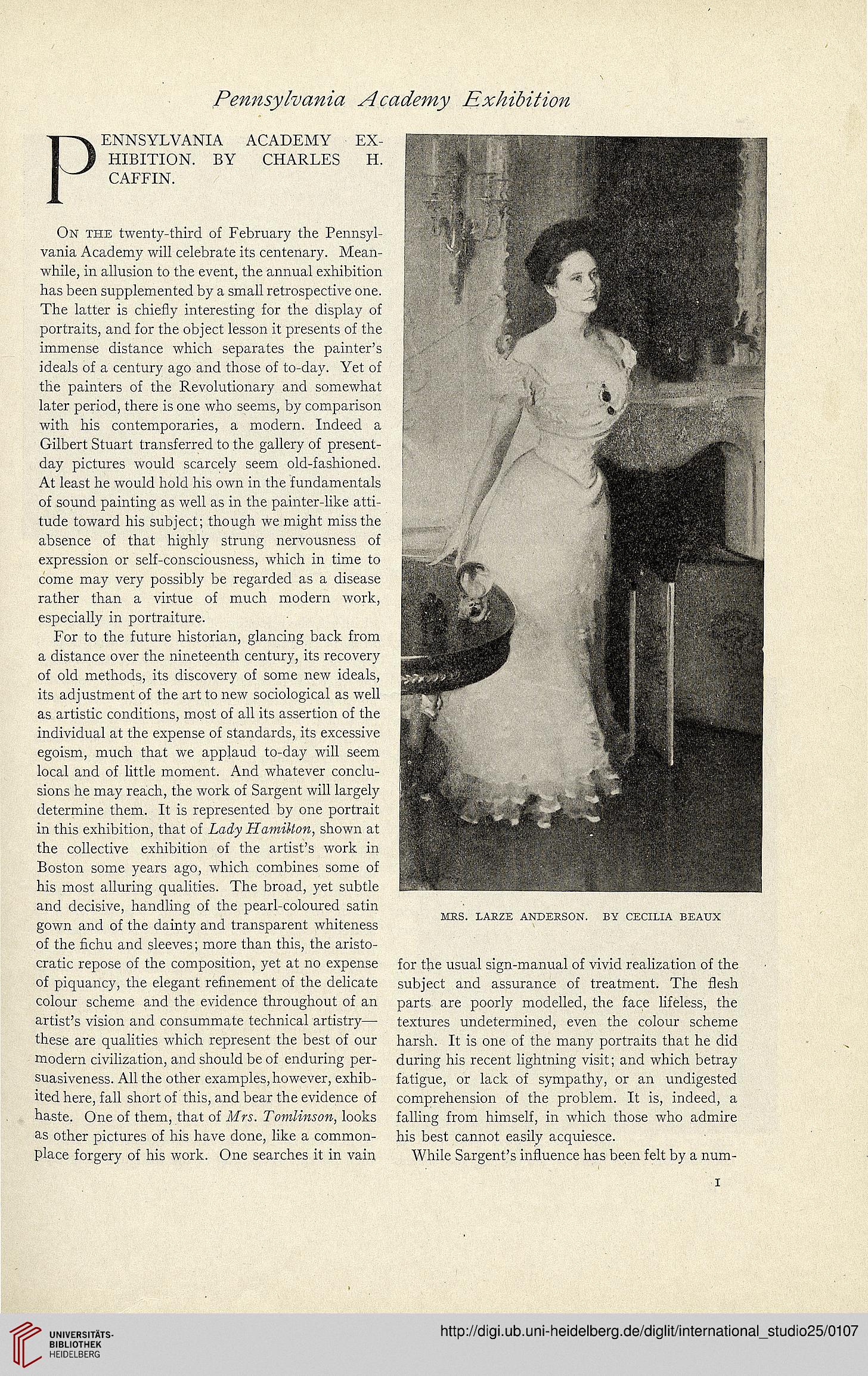T^ ENNSYLVANIA ACADEMY EX-
] ^ HIBITION. BY CHARLES H.
CAFFIN.
ON THE twenty-third of February the Pennsyl-
vania Academy will celebrate its centenary. Mean-
while, in allusion to the event, the annual exhibition
has been supplemented by a small retrospective one.
The latter is chiefly interesting for the display of
portraits, and for the object lesson it presents of the
immense distance which separates the painter's
ideals of a century ago and those of to-day. Yet of
the painters of the Revolutionary and somewhat
later period, there is one who seems, by comparison
with his contemporaries, a modern. Indeed a
Gilbert Stuart transferred to the gallery of present-
day pictures would scarcely seem old-fashioned.
At least he would hold his own in the fundamentals
of sound painting as well as in the painter-like atti-
tude toward his subject; though we might miss the
absence of that highly strung nervousness of
expression or self-consciousness, which in time to
come may very possibly be regarded as a disease
rather than a virtue of much modern work,
especially in portraiture.
For to the future historian, glancing back from
a distance over the nineteenth century, its recovery
of old methods, its discovery of some new ideals,
its adjustment of the art to new sociological as well
as artistic conditions, most of all its assertion of the
individual at the expense of standards, its excessive
egoism, much that we applaud to-day will seem
local and of little moment. And whatever conclu-
sions he may reach, the work of Sargent will largely
determine them. It is represented by one portrait
in this exhibition, that of Z,<uEy shown at
the collective exhibition of the artist's work in
Boston some years ago, which combines some of
his most alluring qualities. The broad, yet subtle
and decisive, handling of the pearl-coloured satin
gown and of the dainty and transparent whiteness
of the fichu and sleeves; more than this, the aristo-
cratic repose of the composition, yet at no expense
of piquancy, the elegant refinement of the delicate
colour scheme and the evidence throughout of an
artist's vision and consummate technical artistry—
these are qualities which represent the best of our
modern civilization, and should be of enduring per-
suasiveness. All the other examples, however, exhib-
ited here, fall short of this, and bear the evidence of
haste. One of them, that of df?'x. TcwJfTwaw, looks
as other pictures of his have done, like a common-
place forgery of his work. One searches it in vain
HRS. LARZE ANDERSON. BY CECILIA BEAUX
for the usual sign-manual of vivid realization of the
subject and assurance of treatment. The flesh
parts are poorly modelled, the face lifeless, the
textures undetermined, even the colour scheme
harsh. It is one of the many portraits that he did
during his recent lightning visit; and which betray
fatigue, or lack of sympathy, or an undigested
comprehension of the problem. It is, indeed, a
falling from himself, in which those who admire
his best cannot easily acquiesce.
While Sargent's influence has been felt by a num-
I




